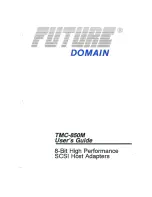
1-4
Cisco ATA 187 Analog Telephone Adaptor Administration Guide for SIP (Version 1.0)
OL-21862-01
Chapter 1 Cisco ATA 187 Analog Telephone Adaptor Overview
Session Initiation Protocol Overview
Figure 1-3
SIP Architecture
SIP Clients
SIP clients include:
•
Gateways—Provide call control. Gateways provide many services, the most common being a
translation function between SIP conferencing endpoints and other terminal types. This function
includes translation between transmission formats and between communications procedures. In
addition, the gateway also translates between audio and video codecs and performs call setup and
clearing on both the LAN side and the switched-circuit network side.
•
Phones—Can act as either a UAS or UAC. The ATA 187 can initiate SIP requests and respond to
requests.
SIP Servers
SIP servers include:
•
Proxy server—The proxy server is an intermediate device that receives SIP requests from a client
and then forwards the requests on the client’s behalf. Proxy servers receive SIP messages and
forward them to the next SIP server in the network. Proxy servers can provide functions such as
authentication, authorization, network access control, routing, reliable request retransmission, and
security.
•
Redirect server—Receives SIP requests, strips out the address in the request, checks its address
tables for any other addresses that may be mapped to the address in the request, and then returns the
results of the address mapping to the client. Redirect servers provide the client with information
about the next hop or hops that a message should take, then the client contacts the next hop server
or UAS directly.
•
Registrar server—Processes requests from UACs for registration of their current location. Registrar
servers are often co-located with a redirect or proxy server.
SIP user agents
RTP
SIP
SIP proxy and
redirect servers
SIP gateway
PSTN
Legacy PBX
SIP
SIP
72342















































